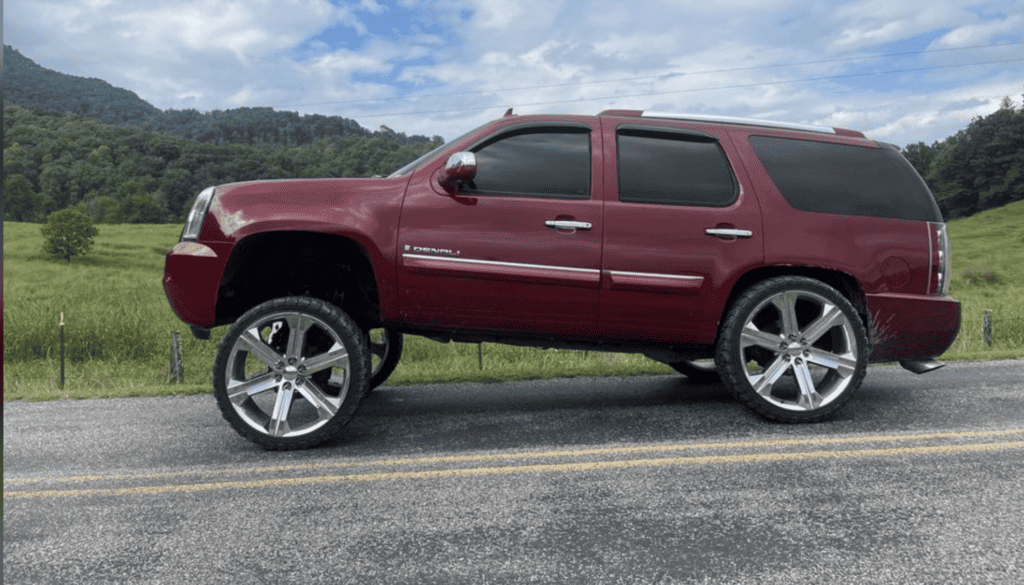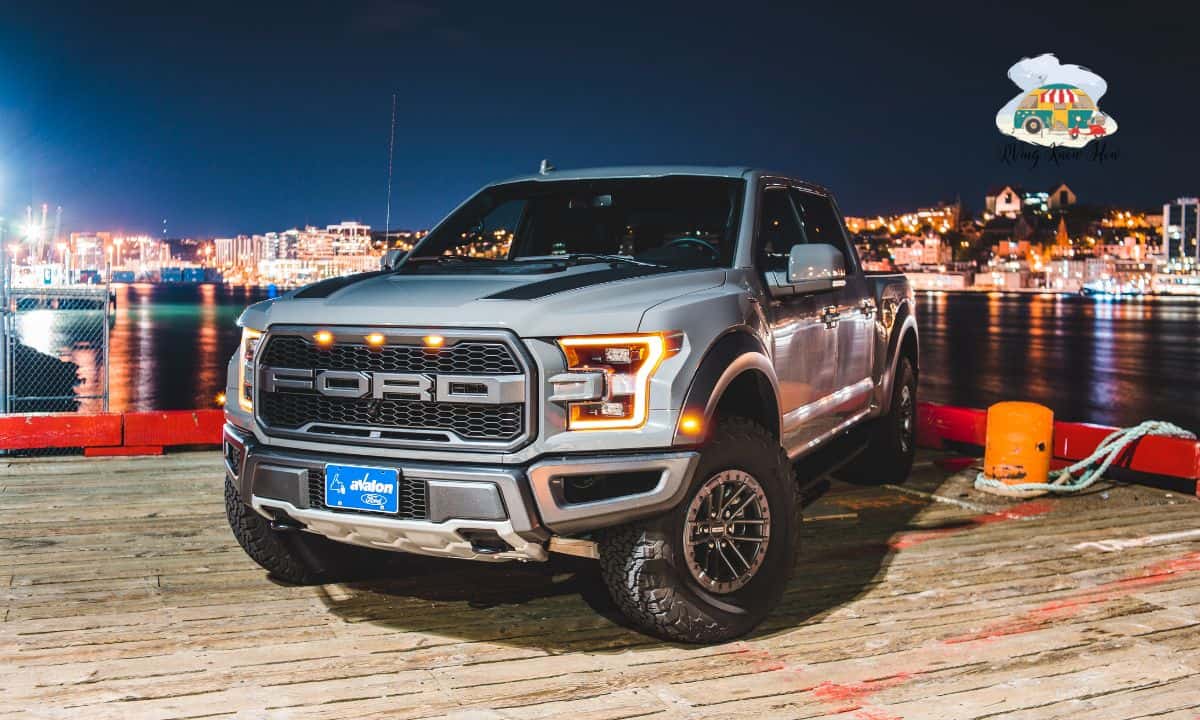Discover the top 5 benefits of squatted trucks for off-roading enthusiasts. Enhance your off-road experience with these modified vehicles. Get the best-squatted trucks now!
The main benefits of squatted trucks for off-roading are enhanced ground clearance, improved approach, and departure angles, better visibility, and increased suspension travel. These modified trucks’ aggressive stance enhances aesthetics. However, some legal restrictions exist in some areas due to their alleged reduced on-road handling and braking performance.
A typical squatted truck has a lift kit on the front that accommodates larger tires, while the rear either remains the same or is sometimes even lowered. This gives the vehicle a sloped appearance.
I run a tuck accessory shop and perform lifts for truck owners. Muddling, logging, or other activities associated with taking a truck off-road are the primary reasons customers come to my shop for squatted truck modification.
You may be interested in this alteration and wondering what the benefits are besides the noticeable aesthetical changes. Here are five ways squatted trucks can benefit you, especially if you’re an off-roading enthusiast.
What Are The Benefits Of Owning A Squatted Truck?
With a squat truck, you can attract admiring stares and spark conversations at every rest break. But if you drive off-road, there’s more to the eye-catching appearance of squat trucks.
1. Higher Ground Clearance
Squatted trucks have increased ground clearance. Raising the front of the vehicle also allows for larger tires.
Some trucks, like the Ford F-150 Raptor, have a 13.1-inch ground clearance, while models like RAM 1500 Rebel are 9.2 inches. These models, like the 9.4-inch tall Toyota Tacoma TRD Pro, have high ground clearance.
But unlike these regular trucks, you can better navigate rough and uneven terrains while driving a squatted truck without getting stuck on obstacles like rocks, tree roots, or debris. This is beneficial for off-roading adventures.
2. Larger Tires
Every true off-roading enthusiast should know that larger tire size benefits off-road vehicles because they provide more grip and control over rough surfaces.
Squatted trucks can accommodate larger tires, which provide better traction and stability on challenging off-road trails.
The extensive base of the tire offers enough surface area for the vehicle to cover the trail. This provides excellent friction and helps you maintain control when you drive on extremely wet, sandy, or unfriendly terrain.
3. Improved Approach and Departure Angles
The lifted suspension of squatted trucks enhances the approach and departure angles of the vehicle. This means you won’t scrap the front or rear bumper when tackling steeper inclines and declines peculiar to off-road terrains.
The improved approach and departure angle are still a function of ground clearance and front and rear overhangs. Some squatted Tahoe truck owners have testified that their vehicle’s higher approach and departure angles significantly reduced the risk of damage.
4. Better Vision While Driving
When driving off-road, you need to be able to see further ahead to anticipate holes, bumps, or steep surfaces. When driving a squat truck with an elevated front, you’re higher off the ground and have better visibility of the trail ahead.
Unlike driving in regular trucks, you can change speed, roadway position or react earlier ahead of potential hazards.
5. Water Fording
Thanks to their higher intake point, squatted trucks can often wade through deeper water than stock vehicles. This attribute becomes very beneficial if you encounter water crossing on off-road routes.
Although unaltered trucks like the Land Rover Defender have an impressive water-wading capacity (900mm), as well as the military-style Jeep Wrangler and Renegade, they don’t come close to the ability of squatted trucks modified for super off-road wading depth.

What’s The Buzz About Squatted Trucks Recently?
The idea of squatted trucks traces back to Members of the Baja Racing Circuit who raised the front of their trucks to improve landing after jumps while racing the desert sand. The primary idea was to prevent nosedives and fatal damages.
If you’ve been following the latest trends in the trucking world, you must have seen that these modified vehicles have been popping up everywhere and are now even used on-road. The trend has captured the attention of many.
Most squatted trucks may look cool to some, but it continuously sparks controversy and debates among truck enthusiasts and lawmakers, explaining why it has been banned in some jurisdictions.
Many people who cringe at squatted trucks believe they are only suitable for off-roaders who want to improve their trucks’ ground clearance for navigating challenging terrains.
The X (Formerly Twitter) handle @SuperCarJonny doesn’t hide its owner’s dismay:
This has to be the stupidest “trend” in the automotive world. pic.twitter.com/oeoDKJyrCO
— Johnny 🏎️✌️ (@SupercarJohnny) August 11, 2023
Are There Any Safety Concerns Associated With Squatted Trucks?
While squatted trucks are beneficial for off-roading purposes, they also pose safety concerns on the vehicle’s suspension system while driving on icy roads and poor vision of the vehicle’s immediate front.
- Heavy load on the suspension system: When you alter your truck to become squat, it burdens the rear components of the suspension system. This can translate to wear quicker and higher maintenance costs. So you need to prioritize regular inspection when using squatted trucks.
- Less grip and stability on icy roads: Wet or slippery conditions can increase the risk of slipping or losing control when driving squat trucks, especially models with higher rear ends. So when driving these altered vehicles in bad weather conditions, you must slow down and be extra cautious.
- A poor vision of the vehicle’s immediate front: Another safety issue with squatted trucks is that, as the driver, you may struggle to see in front of the vehicle due to the elevated design. It may not pose a problem with squatted toy trucks, but it’s a severe issue on actual trucks. Due to the elevated design, some truck enthusiasts dread running over motorists at night with squatted trucks.
Legal Requirements For Driving A Squatted Truck
The legal requirement for driving a squatted truck depends on your jurisdiction. In many places where it’s not outrightly banned, such as Virginia, the law allows you to lift the front of your truck, but the front cannot be more than four inches higher than the rear.
Generally, different states have standards that specify road safety laws to prevent excessive alterations. For example, California, Pennsylvania, and Virginia have restricted how far a car may be lowered.
Are Squatted Trucks Illegal?
Squatted trucks are not necessarily illegal in all places. But in places where they have been banned, it is a violation of the law to drive these vehicles. For example, South Carolina and North Carolina have an outright ban on squatted trucks, while places like Virginia have restricted how far a car may be lowered. The legitimacy of driving squatted truck depends on your jurisdiction.
How To Properly Maintain A Squatted Truck
Since altering the suspension geometry can impact the truck’s handling and safety, you must be ready for the maintenance commitment that a squatted truck requires. Here are some steps I recommend:
- Always inspect the suspension components: Regularly inspect the suspension component, including the springs, shocks, struts, and control arms. Don’t overlook any signs of wear, damage, or leaking fluids.
- Prioritize regular servicing: The slope design of squatted trucks places a heavy load on the suspension systems. You need to do frequent oil changes, fluid checks, and other routine maintenance tasks than usual.
- Monitor your brake system: Inspect the brake pads, rotors, and fluid levels. The altered suspension geometry could affect the braking performance.
- Weight distribution: Before you take your squatted truck offroad, be mindful of how you load your vehicle. Don’t overload the rear. It can exacerbate the uneven suspension setup.
The Bottom Line
Squatted trucks are beneficial for off-roading purposes. They provide increased ground clearance, improved approach, departure angles, and an eye-catching appearance.
The aesthetic of squat trucks can be very appealing to some. But Suppose you’re thinking of squatting your vehicle. In that case, it has to be motivated by the need to drive off-road because this alteration can significantly reduce the truck’s on-road handling and braking performance.
Overall, I strongly recommend you look into the laws of your area to confirm the restrictions stipulated for truck modifications.




![The 8 Best Truck Campers with Slide Outs in [currentyear] 5 Best 2021 Truck Campers With Slide Outs](https://www.rvingknowhow.com/wp-content/uploads/2020/11/Best-2021-Truck-Campers-With-Slide-Outs.jpg)
![The 8 Best Lightweight Truck Campers in [currentyear] 6 Best Lightweight Truck Campers](https://www.rvingknowhow.com/wp-content/uploads/2021/02/Best-Lightweight-Truck-Campers.jpg)